Audiences for Ebola communication include household decision makers; health care workers and community health volunteers; faith, community and traditional leaders; political leaders; and others. [Note: The information on audiences is gleaned from studies in several countries. The team will need to consult or conduct local research on Ebola beliefs and practices and health provider KAP in any specific location. Use this local research to define the primary and influencing audiences and to inform the audience profiles and strategic design.]
Primary (Key) and Secondary (Influencing) Audience Segments & rationale for their selection
Primary Audiences
Primary audience 1: Household decision makers
Decision makers at the household level need to understand the risks of Ebola, the signs and symptoms of the disease, how it is transmitted, and what to do if they or someone they know is suspected to have Ebola or to have died from it. Understanding the risk and having the skills and confidence to act will mitigate the fear that can lead to denial, belief in myths and misconceptions, and unhealthy behaviors, and motivate them to take action to protect themselves and their families. [Note: If needed, one can divide these audiences into even more targeted groups. For example, messages can be targeted based on how close Ebola is to the family/community, if there are no known cases in the area, etc.]
Primary audience 2: Health care workers who provide care to the community
Health care workers need to understand how to protect themselves in the face of Ebola both within a health care setting and within communities, since many treat sick peers, relatives and neighbors at home after putting in long hours at clinics. Many of these health care workers are overworked, fatigued and, therefore, prone to make mistakes. In many cases, fear of contracting Ebola and the stigma of Ebola has led to workers leaving their jobs or to providing substandard care. They need to have the support, equipment and training to care for a suspected Ebola patient properly.
Influencing Audiences
Influencing audience 1: Faith and traditional leaders
Faith and traditional leaders can bridge religious and cultural practices with safety practices. They can be recruited and trained to provide information about Ebola and spread the practice of proper community actions, such as safe burials and treatment seeking. They can also serve as a link to local officials for contact tracing. These often-trusted sources can also play a key role building trust and dispelling myths and misconceptions.
Influencing audience 2: Community mobilizers
Community norms play a large role in changing unsafe behaviors and reducing stigma of Ebola survivors and people working to contain Ebola and treat the sick. It is crucial to help communities manage their fear of Ebola by providing them with the knowledge and skills to protect themselves and their families and peers.
Influencing audience 3: District health teams and policy makers
District health teams and policy makers can ensure that facilities have proper equipment and staff and that ETUs are set up quickly should an outbreak occur. They can ensure that coordinating mechanisms for hotlines, safe burial practices and hand-washing stations are in place when needed, and that HWs are properly trained. They can prioritize SBCC programs that increase awareness about Ebola.
Examples of Audience Profiles
PRIMARY AUDIENCE 1: HOUSEHOLD DECISION MAKERS
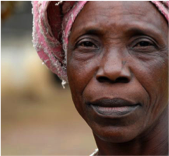
Marietta, 40
mother, rural Liberia
Marietta is married, with three boys, ages 20, 16 and 8. She attended school as a girl for only a short time, leaving to help her family with household chores after her mother died as a casualty of the war. Her literacy level is low. She is a devout Christian, attending church every Sunday and teaching her own family about her faith, which is also rooted in local and traditional values and practices. The nearest health center is 10 kilometers away but she started going there for care after a trusted peer, a health care worker, told her to do so. Marietta’s house has an old latrine, and she gets water from a nearby stream. When Ebola struck her community, she consulted her family members and peers for support and advice, but the mixed messages confused and scared her even more. She heard about a hotline but does not have a mobile phone to call. She reached out to her religious and traditional leaders in the community for advice.
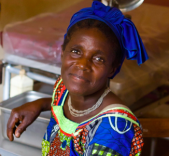
Amelie, 30
Kinshasa, DR Congo
Amelie is 30 years old and has given birth to seven children. She believes the old ways are good ways since they have worked for generations. The government opened a health center in her village, however, she rarely seeks health care at the government facility, preferring to seek assistance from her long-trusted healer. She does not know much more about Ebola than the fact that it existed in her country. She heard from her neighbor that it was a government conspiracy and that Ebola does not really exist. Last year, Amelie's brother passed away and her family organized a funeral service that lasted many days and nights, and many members of the family help prepare the body for burial.
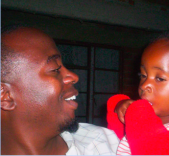
Oliver, 25
married father of one, Kadoma, Zimbabwe
Oliver is 25 years old with one wife. A devout Christian, he believes it is his role to make all of the important decisions for his family after consulting with his wife. As is the tradition, family elders also have certain expectations and offer advice and wisdom. Both he and his wife have to work long hours. Oliver owns a radio and likes to use it for getting information, and usually keeps it on while he is working in his butcher shop. Oliver also often meets with his friends at a local bar after work to share stories, local gossip and information. Oliver heard that there is an Ebola outbreak in West Africa, but is getting conflicting information about how it spread and what to do to prevent it. He is fearful that it will reach Zimbabwe one day.
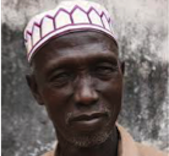
Mohammad, 40
married father of three, rural Guinea Bissau
Mohammad completed seven years of formal education and works for a local merchant. His home has electricity, a tin roof and a toilet. He watches TV with neighbors and has his own mobile phone. He is a respected Muslim in the community, and allows his faith to guide him and his family in their daily decisions. He practices traditional customs during key life events, such as marriages, births and deaths. He has political ambitions and is on friendly terms with the local leaders. He had heard about Ebola in West Africa and wants to get involved to prevent it from coming to his community.
PRIMARY AUDIENCE 2: HEALTH CARE WORKER
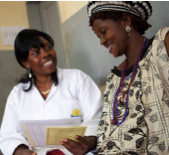
Djiba, 30
health care worker, rural Mali
Djiba has been a health care worker for five years because she wants to see the conditions in her community improve. She works very hard even though the pay is very little. She is married with two children. When an Ebola case appeared in a neighboring community, Djiba became frightened. She learned what she could to protect her family and community, but she is scared about transmission. To complicate matters even more, her husband is against her working because he thinks she might bring Ebola home to the family, and other community members are starting to avoid her.
INFLUENCING AUDIENCE: FAITH AND TRADITIONAL LEADERS
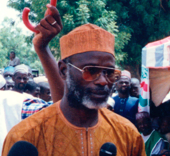
Moussa, 57
religious leader in Niamey, Niger
Moussa is 57 years old and has four children. He serves as a religious leader in his village. The men and women in his community look to him for his knowledge and wisdom on life matters as well as religious matters. He welcomes opportunities to improve health in his area, and new health programs often consult him before launching. He has a healthy, hard-working family with a very productive farm.
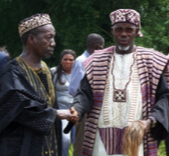
Emmanuel, 60
traditional leader, near Accra, Ghana
Emmanuel is a respected local leader of a district near Accra, Ghana. He enjoys dispensing advice and being held in high regard by the members of his community. He has many friends and colleagues in the private sector and in high government positions. Emmanuel works hard to ensure the community is safe and recently supported the development of a new health facility. His wife works with the Ministry of Education.
The photographs in this I-Kit are used for illustrative purposes only; they do not imply any particular health status, attitudes, behaviors, or actions on the part of any person who appears in the photographs.
Communication Strategy Guidance
View guidance on how to conduct audience segmentation.
